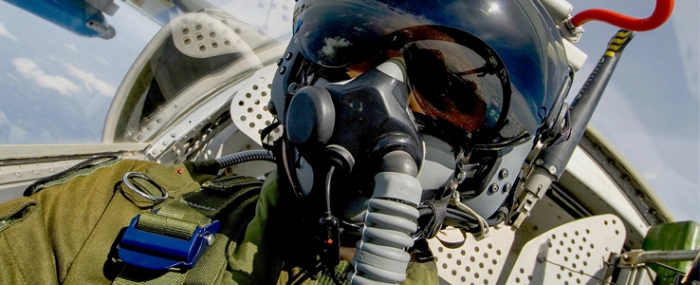
© cobham
Electronics Production |
Cobham provides inhalation sensor for pilot oxygen system
US-based Cobham has delivered the first Inhalation Gas Sensor to the US Air Force School of Aerospace Medicine in support of the Aircrew Mounted Physiologic Sensing System (AMPSS 2.6) program.
The inhalation sensor block is the first instalment of a two part breathing sensor solution that will also include an exhalation sensor block. Together they will work to capture cockpit environmental, oxygen system performance, and pilot physiological data to help discern root cause of debilitating physiological events that continue to plague aircrew safety and mission readiness.
"To keep physiological episodes from happening we need to understand their root cause and then through predictive algorithms, pre-empt the onset of hypoxia-like symptoms," said Stuart Buckley, Vice President, Business Development and Sales at Cobham Mission Systems. "To unravel the mystery of root cause, we will start by creating a comprehensive mosaic of information that will simultaneously zero in on how the oxygen source equipment is performing, what the cockpit environmental conditions are around the pilot, and monitor the pilot's physiological data captured in exhaled breath. This data will then be analyzed for correlations to physiological episodes and hypoxia-like symptoms that may have occurred during flight to ultimately help determine root cause."
The inhalation sensor block is located on the end of the pilot mask breathing hose and is attached to a chest mounted breathing regulator or integrated terminal block. The exhalation sensor will be positioned at the end of second hose attached to the mask exhalation port and can sit inside a vest pocket so as not to impede the pilot's field of regard.



